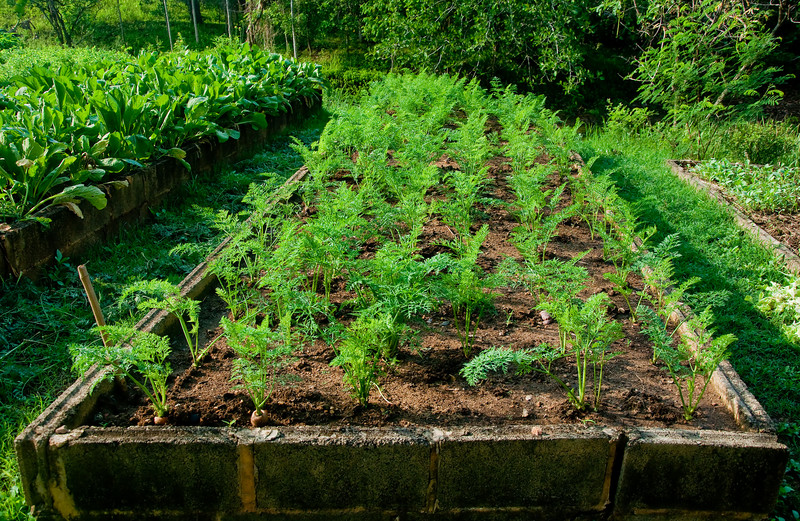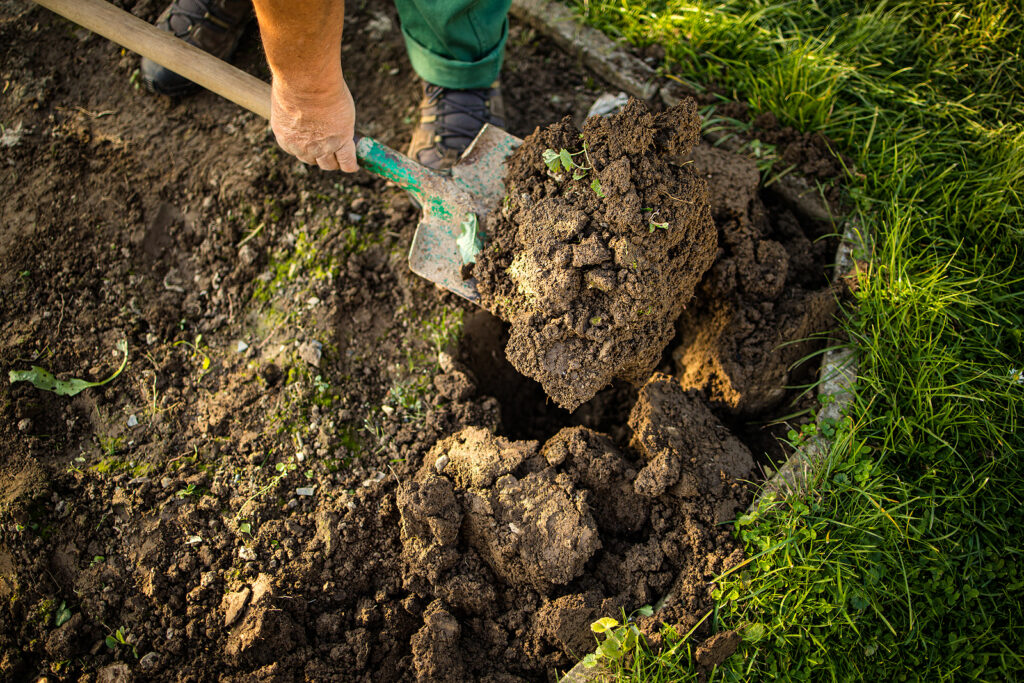French Intensive Gardening, also called French Intensive Planting, is a traditional gardening method that emphasizes closely spaced plants, deep soil preparation, and organic soil management to create a highly productive and space-efficient garden. It focuses on maximizing yields in a small area through dense planting, soil health, and the use of companion plants, allowing gardeners to grow a variety of crops while minimizing weeds and conserving water. This method is particularly suitable for urban and small-scale gardeners who want to make the most out of limited space.
The primary goals of French Intensive Gardening are to improve soil structure, increase soil fertility, and use space wisely. This method relies on double digging to prepare the soil, incorporating large amounts of organic matter, such as compost and manure, to create a rich growing environment for plants. The close spacing of plants creates a canopy effect, which helps retain moisture, regulate temperature, and suppress weeds.

Background and History of French Intensive Gardening
The origins of French Intensive Gardening can be traced back to 19th-century France, specifically to Parisian market gardeners known as “maraîchers.” These gardeners were famous for cultivating vegetables in the densely populated city of Paris, where land was scarce, and high productivity was essential for survival. With limited space, the maraîchers had to develop techniques that would allow them to grow as much produce as possible in a small area.
One significant innovation they used was the practice of “double digging,” where they would dig trenches up to two feet deep and loosen the soil at the base to improve drainage and aeration. This method allowed plant roots to grow deeper and access more nutrients and water. To maintain soil fertility, they also added large quantities of organic matter, including manure, to enrich the soil.
The maraîchers often utilized glass cloches to protect plants from frost, extend the growing season, and create microclimates within the garden. They experimented with layering techniques, planting tall and vining plants alongside shorter crops, thereby using vertical space effectively. Their gardens were famous for producing fresh vegetables year-round, and their practices set the foundation for what is now known as the French Intensive Gardening method.
In the mid-20th century, this method gained renewed popularity in the United States and other countries through the work of advocates like Alan Chadwick, who integrated French Intensive techniques with biodynamic principles to create the “Biodynamic-French Intensive” approach. Today, French Intensive Gardening is often associated with sustainable and organic gardening practices and remains a preferred method for gardeners seeking to maximize yields in a small space while maintaining soil health.

How to Practice French Intensive Gardening
To implement French Intensive Gardening in your garden, follow these steps:
1. Site Selection
Choose a location with at least 6-8 hours of sunlight per day, as most vegetables and herbs thrive in full sun. The area should be relatively level and have good drainage to prevent waterlogging. If you’re gardening in an urban area with limited space, you can use raised beds, containers, or even rooftops to practice this method.
2. Soil Preparation: Double Digging
The foundation of French Intensive Gardening is double digging, a technique used to prepare the soil deeply and thoroughly. This involves loosening the soil to a depth of about 24 inches (60 cm) and incorporating organic matter. Here’s how to do it:
- Mark the Garden Bed: Start by marking the boundaries of the garden bed, ideally no wider than 4 feet to allow easy access without stepping on the soil.
- Dig the First Trench: Dig a trench 12 inches (30 cm) deep across the width of the bed. Place the removed soil in a wheelbarrow or tarp for later use.
- Loosen the Bottom Soil: Use a garden fork to loosen the soil at the bottom of the trench, working it another 12 inches (30 cm) deep without removing it. This step improves aeration and allows plant roots to penetrate deeply.
- Add Organic Matter: Mix compost, manure, or other organic materials into the loosened soil. This will enhance soil fertility and structure.
- Move to the Next Trench: Dig a second trench next to the first one and transfer the soil from this trench into the first trench, covering the loosened and amended soil. Continue this process across the entire bed.
- Fill the Last Trench: Use the soil initially set aside from the first trench to fill in the final trench.
Double digging not only improves drainage and root growth but also enhances the soil’s ability to retain moisture and nutrients, which is crucial for closely spaced plants.
3. Incorporating Organic Matter
Enrich the soil with a variety of organic matter to create a fertile growing environment. Incorporate compost, aged manure, or leaf mold into the soil as you dig. The goal is to maintain high levels of organic content, which will provide nutrients to the plants and improve the soil’s ability to retain moisture.
To further enhance soil fertility, consider adding natural soil amendments like bone meal, blood meal, or rock phosphate, depending on the nutrient requirements of your plants.
4. Plan Your Planting Layout
French Intensive Gardening makes use of dense planting to maximize space and productivity. Here are some guidelines for planning your layout:
- Close Spacing: Place plants closer together than traditional gardening methods, allowing the leaves to form a canopy that shades the soil and prevents weed growth. However, make sure to leave enough space for air circulation to reduce the risk of diseases.
- Companion Planting: Use companion planting to take advantage of beneficial plant relationships. For example, plant carrots next to onions to deter pests, or grow basil near tomatoes to enhance their flavor.
- Use Vertical Space: Incorporate trellises, stakes, or other supports for climbing plants like beans, peas, or cucumbers. This maximizes vertical space and allows you to grow more in a small area.
- Layered Planting: Plant crops of different heights together, with taller plants providing shade for smaller, more heat-sensitive crops. For example, grow lettuce beneath taller corn or sunflowers.
5. Planting Techniques
When planting, consider the following techniques to ensure the best results:
- Seed Starting and Transplants: Start seeds indoors or use transplants to get a head start on the growing season. This can be particularly helpful for plants with long growing cycles.
- Succession Planting: After harvesting a crop, replant the space with a different crop to make the most of the growing season. This practice maintains soil productivity and prevents nutrient depletion.
- Intercropping: Grow fast-maturing crops (like radishes) alongside slower-growing plants (like cabbage). This allows you to harvest multiple crops from the same area over time.
6. Watering
Proper watering is crucial in French Intensive Gardening due to the dense arrangement of plants. While the close spacing helps retain moisture, it’s important to keep the soil evenly moist:
- Watering Techniques: Use drip irrigation, soaker hoses, or hand watering to deliver water directly to the soil. Avoid overhead watering, which can lead to fungal diseases.
- Mulching: Apply a layer of organic mulch, such as straw or shredded leaves, to help retain moisture, regulate soil temperature, and reduce weed growth.
7. Fertilization and Soil Care
Maintain soil fertility by regularly adding organic matter, such as compost, throughout the growing season. This replenishes nutrients used by the plants and supports ongoing soil health. Avoid synthetic fertilizers, which can disrupt the natural soil ecosystem.
8. Pest and Weed Management
The dense planting in French Intensive Gardening naturally suppresses weeds, but some maintenance is still required. Hand-pull any weeds that do appear, and use organic pest control methods when necessary:
- Companion Plants for Pest Control: Grow pest-repelling plants like marigolds, garlic, or nasturtiums alongside your main crops.
- Natural Barriers: Use row covers or netting to protect plants from insects or animal pests.
9. Harvesting
Harvest crops regularly to encourage continued growth and make room for succession planting. Picking vegetables when they are ready ensures the garden remains productive throughout the growing season.

Benefits of French Intensive Gardening
- High Productivity: Yields are generally higher due to close spacing and optimal use of the growing area. Double digging and regular organic matter additions maintain soil fertility.
- Efficient Use of Space: Ideal for small gardens, urban areas, or limited space, making it possible to grow a variety of crops in a compact area.
- Improved Soil Health: The method builds rich, well-drained, and aerated soil that supports vigorous plant growth.
- Water Conservation: Dense planting creates a canopy that reduces evaporation, while organic matter improves the soil’s water retention capacity.
- Weed and Pest Reduction: The canopy effect of close planting helps suppress weeds, and companion planting can deter pests.
Challenges of French Intensive Gardening
- Labor-Intensive Soil Preparation: The double-digging method requires significant effort, especially in large gardens or areas with heavy clay soil.
- Higher Initial Investment: Amending the soil with large quantities of organic matter can be costly upfront, although it pays off over time.
- Potential for Disease: While close spacing is beneficial, it can increase the risk of disease spread due to limited airflow. Proper plant selection and maintenance are essential.
French Intensive Vegetable Gardening is a time-tested, sustainable gardening method that can produce abundant yields in small spaces. By focusing on deep soil preparation, high-density planting, and organic soil management, it creates an environment where plants can thrive. Though labor-intensive in its initial setup, the method’s benefits in terms of productivity, space efficiency, and soil health make it worthwhile for gardeners seeking a rewarding and ecologically sound approach.
Related articles:
Narrow Bed, Wide Row Vegetable Garden Planting
Companion Planting Basics in a Vegetable Garden
How to Create a Home Garden Food Forest



